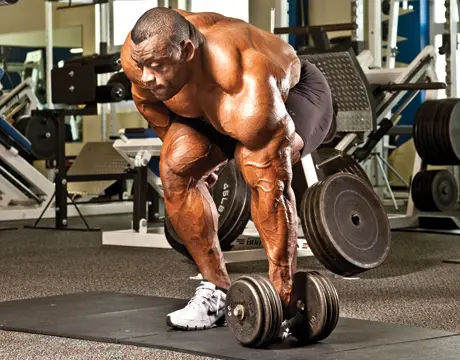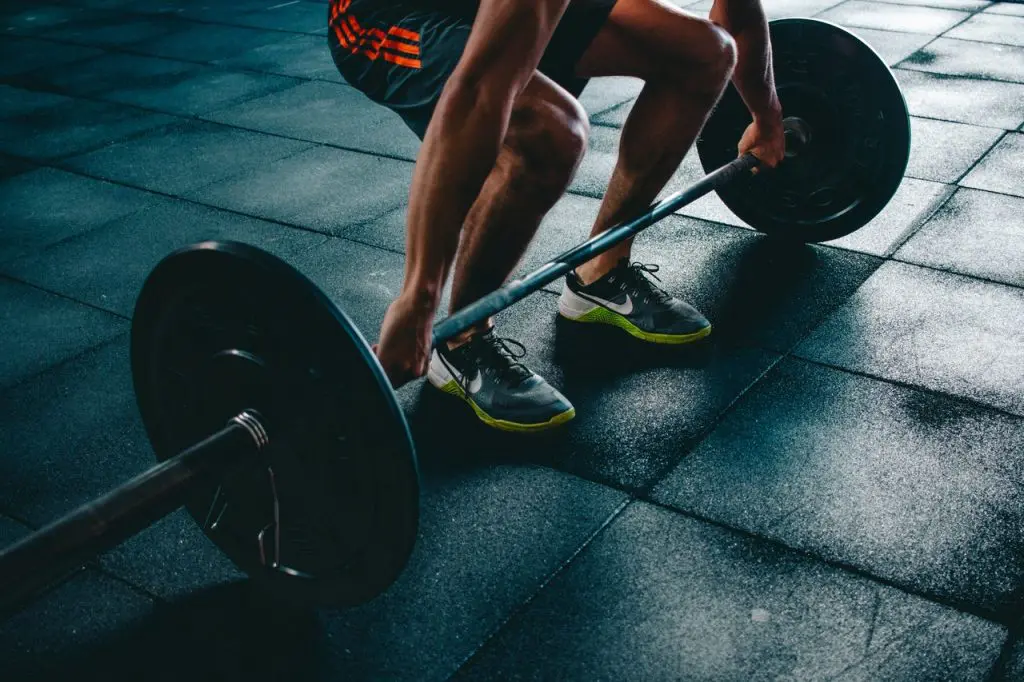
The best online fitness resource you'll ever need. We filter out the BS to ensure you meet your health and fitness goals!

The best online fitness resource you'll ever need. We filter out the BS to ensure you meet your health and fitness goals!

The deadlift is perhaps the king of all barbell movements. Deadlift benefits are plentiful, from improved athletic performance to muscle growth and increased full body strength. It will work your full posterior chain, including your back, legs and core, in one movement. If you’re serious in any way about putting on muscle and/or growing stronger, you need to be making use of it.
But what about single arm dumbbell deadlifts? Of course, there is nothing too novel about working unilaterally- single leg presses, single arm rows, single arm pushdowns or curls are all pretty common gym staples. For deadlift specific work, you might generally turn to walking lunges, single arm kettlebell cleans and unilateral hamstring curls.
However, there is an argument to be made for including single arm dumbbell deadlifts in your training.

As perhaps the ultimate compound movement, there will be plenty of joints and muscles involved in the deadlift. Any deadlift variation should stimulate and work your glutes, hamstrings, quads, abs, lower and upper back, from the spinal erectors, through the lats, to the traps, and your forearms and grip strength as you hold onto the bar and prevent it from slipping out of your closed fists.
Because there is such a great deal of muscle mass involved from all of these muscle groups, deadlifts tend to be incredibly heavy. For most (though not all) lifters, they will represent the heaviest of the big three lifts (squats, deadlifts and the bench press). This makes the deadlift perfect as both a way to test strength and a way to build full body strength and muscle.
Though isolation movements should be used in conjunction with them, compound movements are much more potent and efficient. Rather than working each individual muscle group, one after the other, you can work everything at once, giving you either less time in the gym or more time for other, assistance work. They also teach your body to work as a single unit, as all of these disparate muscle groups have to work in concert with one another.
However, muscular imbalances can often affect large compound movement, and cannot really be fixed by them. One side of your body will inevitably be stronger than the other and will likely end up doing the lion’s share of the work. In addition, variety itself is its own virtue: it keeps things feeling fresh and teaches your body new, more efficient motor patterns as it adapts.
Therefore, it’s rare to see a deadlift program containing just strict deadlifts: varieties like the stiff-legged deadlift, axle deadlift, sumo deadlift, deficit deadlift and rack pull should all take centre stage at one point or another.
Unilateral work like kettlebell cleans, walking lunges and, importantly, single arm dumbbell deadlifts should also be programmed regularly, specifically to stop over training and under training on different sides of the body, and to work on stability.
It’s a lot harder to stabilise the body when resistance is placed outside of its centre of gravity, as it is inherently with all unilateral work. Your core will have to compensate to keep you upright. Your shoulders, specifically your traps, will have to compensate during a single arm dumbbell deadlift. Your legs will take different amounts of force, meaning greater subtlety being needed and created with regards muscle memory through your hamstrings, quads and glutes.
These are all complimentary to the benefits of a conventional deadlift. They will all complement the deadlift itself, improving these different facets.
You will need a small amount of free space in which to perform your single arm dumbbell deadlift. You will also, obviously, need a dumbbell. Don’t go for the lower end rack- you don’t want to perform the single arm dumbbell deadlift with 5kg! You will need to go to the heavy end- 30-50kg will be more appropriate for most people. Some lifters will need more. Most commercial gyms only stock dumbbells up to around the 50kg mark, so these advanced lifters will need to make special provision, if they can.
To perform the single arm dumbbell deadlift:
There are a few things to keep in mind when performing your single arm dumbbell deadlifts.
Firstly, remember that deadlifts are a press-pull movement, not just a pull exercise. You’re not performing a back extension, or at least not solely. Push the ground away when you’re in position, pressing downwards through your legs whilst pulling the dumbbell up towards your waist.
Secondly, judging weight may be a little tough at first. With a weight that is too light, you will be able to simply perform the back-extension portion, without needing to engage your legs. Your body will naturally do this for efficiency’s sake. If you go too heavy, you risk learning bad form and injuring yourself. Pick a weight to start with that you can comfortably lift for reps, but that still challenges you and require you to push down into the ground.